Today’s Current Affairs: 27th September 2024 for UPSC IAS exams, State PSC exams, SSC CGL, State SSC, RRB, Railways, Banking Exam & IBPS, etc
Table of Contents
Taiwan Strait:
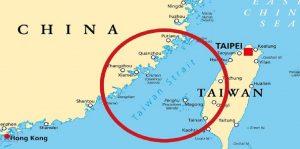
A Japanese warship cruised for the first time to assert its freedom of navigation through the Taiwan Strait.
- Taiwan Strait is also called Formosa Strait which separates the island of Taiwan and continental Asia.
- The chief ports are Amoy in mainland China and Kao-hsiung in Taiwan.
- Several rivers including the Jiulong and Min rivers from China’s Fujian Province drain into the Taiwan Strait.
- The biggest islands along the Taiwan side include Penghu (or Pescadores), Xiamen, and Pingtan.
- The Taiwan Strait constitutes a critical corridor connecting the South China Sea to the East China Sea and also serves as a busy navigational waterway, on which millions of tons of cargo are ferried annually.
- The strait is also one of the most important fishing grounds in China and more than a hundred economically important fish species are found here.
Periodic Labour Force Survey : In News
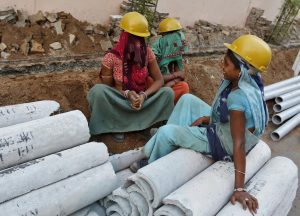
The Periodic Labour Force Survey (PLFS) for the period between July 2023 and June 2024 was released by the Labour Bureau.
Key Findings:
- Labour Force Participation Rate (LFPR) for persons of age 15 years and above was 60.1%. The same for male and female was 78.8% and 41.7% respectively.
- Worker Population Ratio (WPR) for persons of age 15 years and above was 58.2%. The same for male and female was 76.3% and 40.3% respectively.
- Unemployment Rate (UR) was 3.2% for both male and females of age 15 years and above.
Unemployment Rate for male has shown a marginal decline from 3.3% during July 2022 – June 2023 to 3.2% during July 2023 – June 2024, among females it has increased from 2.9% to 3.2% during the same time span.
Periodic Labour Force Survey (PLFS):
- Considering the importance of availability of labour force data at more frequent time intervals, the National Statistical Office (NSO) launched the Periodic Labour Force Survey in April 2017.
Unified Logistics Interface Platform : Hackathon 2.0
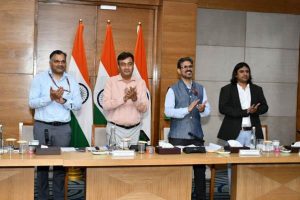
NICDC Logistics Data Services Ltd. (NLDSL) announces the launch of Unified Logistics Interface Platform Hackathon 2.0.
- Hackathon 2.0 is a competitive event, aimed at fostering innovation and developing digital solutions to tackle pressing challenges in the logistics industry.
- It invites developers, start-ups, and industry players to come together.
- The focus of this year’s hackathon is on addressing key logistics challenges such as sustainability, complex supply chain processes, unified documentation, and multimodal logistics optimization.
- Unified Logistics Interface Platform is a digital gateway that allows industry players to access logistics-related datasets from various Government systems through API-based integration.
- Currently, the platform integrates with 37 systems from 10 ministries via 118 APIs, covering over 1800 data fields.
- It was launched by the Prime Minister as part of the ‘National Logistics Policy (NLP)’ on September 17, 2022.
Nazca Lines:
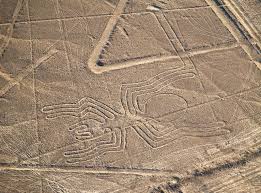
Scientists have discovered more than 300 never-before-seen Nazca Lines in Peru.
- The new lines included abstract humanoids, “decapitated heads,” domesticated animals, fish, birds, cats, a potential “ceremonial scene” and human/animal interactions.
- The most bizarre shape was arguably a 72-foot-long (22 meters) “killer whale holding a knife.”
- The staggering new haul was unearthed in just six months with the help of artificial intelligence (AI) and almost doubles the number of known geoglyphs in the region.
- The Nazca Lines are a group of large human-carved geoglyphs located in a roughly 170-square-mile (440 square kilometres) area of Peru’s Nazca Desert.
- The ancient artworks were likely created between 200 B.C. and A.D. 500 by members of the pre-Incan civilisation, known as the Nazca (or Nasca), who removed the upper layers of the desert’s red-tinged surface pebbles to reveal sections of lighter soil in a wide range of different shapes and sizes.
PARAM Rudra Supercomputers:

The Prime Minister of India virtually launched three Param Rudra Super Computing Systems and a High Performance Computing (HPC) system for weather and climate research.
- It is designed to tackle complex computational challenges across various scientific and engineering domains.
- Three Param Rudra supercomputers have been developed indigenously under the National Supercomputing Mission.
- They have been deployed at three key locations: Delhi, Pune and Kolkata.
- In Pune, the Giant Metre Radio Telescope (GMRT) will leverage the supercomputer to explore Fast Radio Bursts (FRBs) and other astronomical phenomena.
- In Delhi, Inter University Accelerator Centre (IUAC) will enhance research in fields like material science and atomic physics.
- In Kolkata, S N Bose Centre will use supercomputing technology to drive advanced research in areas such as physics, cosmology, and earth sciences.
Mao Nagas:
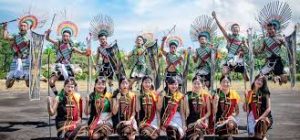
The Mao Council, apex tribal body of the Mao Nagas in Manipur, has officially accepted the judgment and order of the Tenyimia People’s Organisation (TPO) Presidential Council regarding the traditional land dispute along the Nagaland-Manipur border.
- Mao Naga is one of the indigenous tribes of Northeast India.
- It is one of the Naga tribes in Manipur.
- Their language is called Mao, and also the whole land area inhabited by them is also called Mao.
- The Mao Nagas call themselves Ememei or Memei in their language.
- Mao is geographically situated in the northern part of Manipur, adjoining the southern part of Nagaland.
- According to the 2011 provisional census, Mao has a population of 97,195.
- The Mao Nagas live in a compact and well-protected village usually situated in the hilltop and mountain ridges.
- Their society follows a patriarchal system where descent is traced through the male lineage.
- Like any other Naga community, the Mao Naga is divided into different clans (Opfuta), which are further divided into sub-clans.
- The economy of the Mao Nagas is predominantly agrarian, and rice is their staple food.
- Terraced rice cultivation (both dry and wet) is a customary practice that Mao people have been engaged in through generations.
- They emphasized cooperative and collective endeavors and believed in the system of distribution in the form of a barter system or mutual exchange.
- Before the advent of Christianity, the Mao Naga had their traditional religion known as ‘Opfupe Chüna-Chüno’ (religion of the forefather).
- They believe in the existence of a Supreme being called ‘Iyi Koki Chüku Kapi Oramei’ (a benevolent God who protects and nurtures man).
- Today, the majority of the Mao Nagas have embraced Christianity.
Spiral Galaxy:

NASA Hubble Space Telescope recently shared a stunning video of a spiral galaxy known as Caldwell 45, or NGC 5248.
- Spiral galaxies are twisted collections of stars and gas that often have beautiful shapes and are made up of hot, young stars.
- In a spiral galaxy, the stars, gas, and dust are gathered in spiral arms that spread outward from the galaxy’s center.
- Most of the galaxies that scientists have discovered so far are spiral galaxies, as opposed to the other two main categories of galaxy shapes—elliptical and irregular.
- Approximately 60% of all galaxies are thought to be spiral galaxies.
- The Milky Way, the galaxy that includes Earth and our solar system, is an example of a spiral galaxy.
- Most spiral galaxies contain a central bulge surrounded by a flat, rotating disk of stars.
- The bulge in the center is made up of older, dimmer stars and is thought to contain a supermassive black hole.
- Approximately two-thirds of spiral galaxies also contain a bar structure through their center, as does the Milky Way.
- The disk of stars orbiting the bulge separates into arms that circle the galaxy.
- These spiral arms contain a wealth of gas and dust and younger stars that shine brightly before their quick demise.
- The majority of spiral galaxies rotate in the sense that the arms trail the direction of the spin.
- The visible portion of spiral galaxies contains only a small fraction of the total mass of the galaxy, and that spiral galaxies are surrounded by an extensive halo consisting mostly of dark matter.
- Spiral galaxies are thought to evolve into elliptical galaxies as the spirals get older.
8th India Water Week (IWW) 2024:
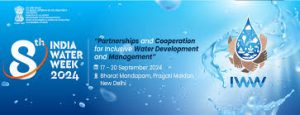
The President of India inaugurated the 8th India Water Week (IWW) 2024 in New Delhi, under the aegis of the Ministry of Jal Shakti.
- This prestigious international forum has gained significance as a key platform for discussions and collaboration on water resource management.
- It aimed to address critical challenges pertaining to water management and fostering innovation in water-related technologies and practices.
- Since its inception in 2012, IWW has evolved into a crucial platform in global water diplomacy, facilitating dialogue, innovation, and knowledge exchange on critical water-related challenges.
- Theme: The theme of IWW 2024, ’Partnerships and Cooperation for Inclusive Water Development and Management’ highlighted the pivotal role of collaborative efforts across sectors and nations in tackling the escalating water challenges of the 21st century.
- It emphasized the need for integrated and holistic approaches to water conservation, efficient management, and the equitable distribution of water resources.
- The theme also underscored the critical importance of international cooperation and multi-stakeholder partnerships in ensuring sustainable water development and addressing global water security concerns.
UNSC Reform:
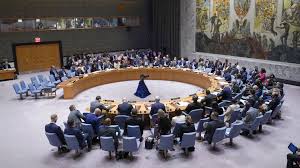
With the United Nations (UN) approaching its 80th anniversary next year, the Group of Four (G4) countries seeking permanent membership and reform of the UN Security Council (UNSC) called for urgent reform of the world body. Other plurilateral groupings, such as the L69 and C-10 also echoed these calls.
- The Group of Four (G4) countries—India, Brazil, Germany, and Japan—are seeking urgent reform of the UN Security Council (UNSC) to include both permanent and non-permanent members from developing countries.
- G4 and other groups such as L69 and C-10 emphasized the need for reform to make the UNSC more representative, democratic, and transparent, especially for Global South representation.
- The UNSC reform is critical to enhancing its credibility and legitimacy, with these groups pressing for immediate text-based negotiations.
- L69 Grouping: 32 developing nations including India, from Asia, Africa, Latin America, the Caribbean, and Pacific Small Island Developing States.
- Aim: Expansion of UNSC permanent and non-permanent categories to reflect contemporary global realities and promote a more accountable and transparent Security Council.
- C10 Grouping: Committee of Ten Heads of State and Government of the African Union (C10), comprising 10 African nations.
- Aim: Focuses on UNSC reform, advocating for better representation of Africa and pushing the Common African Position based on the Ezulwini Consensus and Sirte Declaration.
United Nations Security Council (UNSC):
- Origin: Established in 1945 after World War II as one of the five principal organs of the United Nations.
- Led by 15 Members—5 permanent (P5: UK, USA, Russia, China, France) and 10 non-permanent members elected for two-year terms.
- HQ: United Nations Headquarters, New York City.
SASTRA Ramanujan Prize:
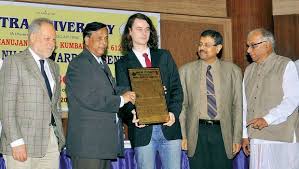
The 2024 SASTRA Ramanujan Prize will be awarded to Alexander Dunn of the Georgia Institute of Technology, U.S.
- The award was instituted by the Shanmugha Arts, Science, Technology & Research Academy (SASTRA) in 2005.
- Given By: SASTRA University, Tamil Nadu, India.
- A cash prize of USD 10,000 is presented annually.
- It is awarded to individuals aged 32 and below for outstanding contributions in the field of mathematics, particularly those influenced by the work of Srinivasa Ramanujan.
Srinivasa Ramanujan:
- Born: 22nd December 1887 in Erode, Tamil Nadu.
- Ramanujan made significant contributions to the analytical theory of numbers, elliptic functions, and partition theory. He also worked on hypergeometric series and Euler’s constant.
- British mathematician G.H. Hardy recognized his talent in 1913 and invited him to Cambridge, where Ramanujan’s work flourished.
ABHED Jackets:

The Defence Research & Development Organisation (DRDO) in collaboration with the Indian Institute of Technology (IIT) Delhi has developed Light Weight Bullet Proof Jackets called ABHED (Advanced Ballistics for High Energy Defeat).
- These jackets are designed to offer enhanced protection while maintaining lightweight features, meeting the evolving needs of the Indian Armed Forces.
- Made from polymers and indigenous boron carbide ceramic material, ensuring both strength and reduced weight.
- Developed at the DRDO Industry Academia Centre of Excellence (DIA-CoE) at IIT Delhi using advanced simulation and material characterization techniques.
- Provides 360-degree protection with modular-design and front/rear armour plates.
- Weight ranges from 8.2 kg to 9.5 kg depending on the required BIS level standards.
- Lighter than the maximum weight specified by the General Staff Qualitative Requirement of the Indian Army and meets the highest threat level standards.
Dwayne Bravo Announces Retirement from All Cricket:
Dwayne Bravo has confirmed his retirement from all cricket after his final season in the CPL (Caribbean Premier League) was cut short by injury. The West Indies maestro will take up a new role as Mentor in franchise cricket
India Joins Leadership of Global Anti-Corruption Alliance:
India has been elected to the 15-member GlobE Steering Committee, which focuses on combating corruption and asset recovery. This decision was made during a plenary session in Beijing on September 26, 2024, following a multistage voting process.
Nirmala Sitharaman Attends 9th AIIB Board of Governors Meeting in Samarkand:
Union Minister for Finance and Corporate Affairs Nirmala Sitharaman represented India at the 9th Asian Infrastructure Investment Bank (AIIB) Board of Governors meeting held in Samarkand, Uzbekistan, on September 25-26, 2024.




